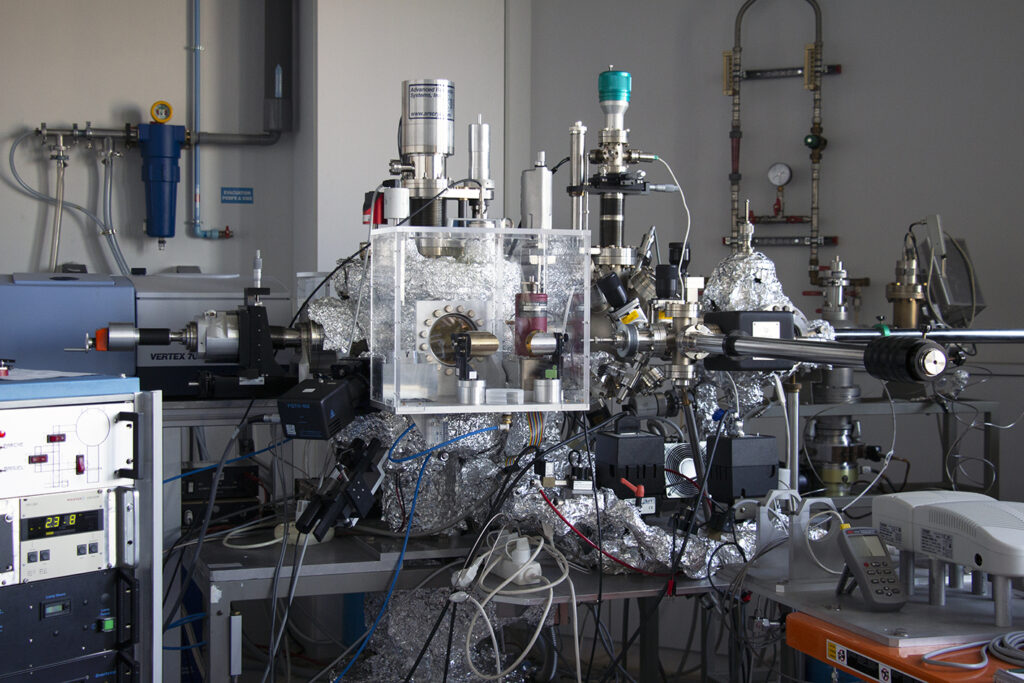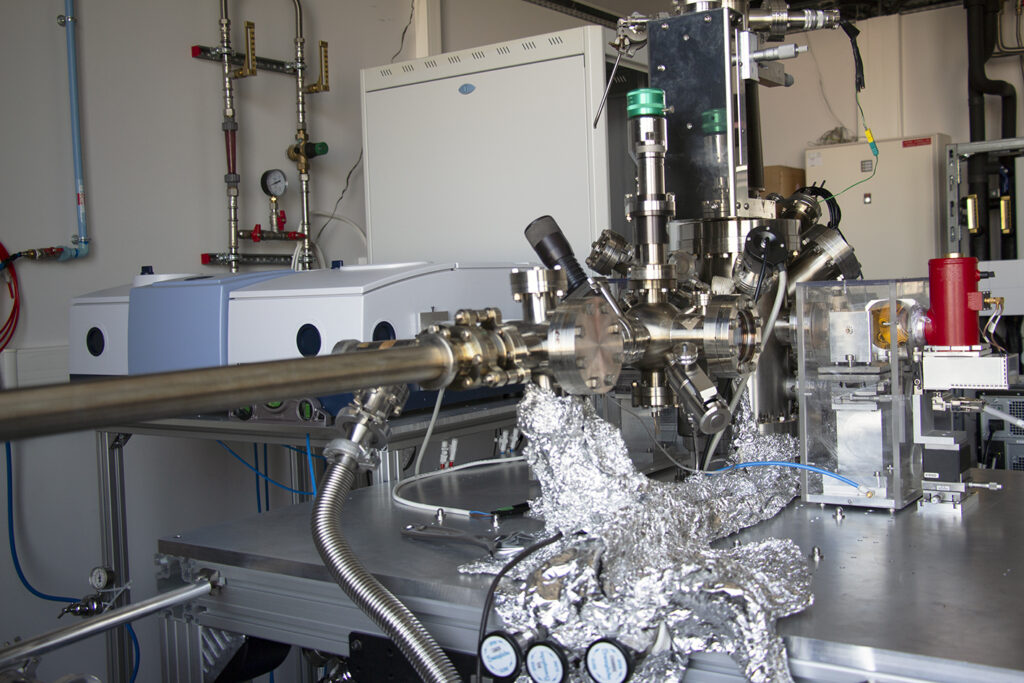List of members |
Facilities |
Internships and jobs |
PhD |
Publications |
News |
Vibrational spectroscopy is a key technique to probe adsorption sites of molecules, their configurations, transient reaction states and mechanisms of molecule/substrate interaction. This all the more true in the context of surface reactivity of oxides which is driven by defects and acid-base properties of its surface sites. Coupled to atomistic calculations, the frequencies and intensity variations of intra-molecular absorption bands (stretching/bending) can be used as a direct probe of the nature of crystallographic faces, of the adsorption sites (defects, kinks, steps) and of the interaction of the molecule with the surface.
The team has developed two vacuum vessels dedicated to spectroscopy in the near and mid infrared range. They are equipped with Vertex 70 spectrometers from Bruker with MCT or InGaAs detectors and purged optics boxes.
The first one is dedicated to the analysis in transmission of samples with high specific surface area in the form of pressed pellets. The specificity of the setup is the analysis in a controlled atmosphere from ultra-high vacuum to pressures of the order of hundreds of mbar of gases such as H2O, H2, CO. The analysis chamber is coupled to a preparation chamber where the sample can be outgassed up to 1200 K in a home-made furnace. Thanks to a He cryostat, it is possible to perform adsorptions at very low temperatures.

Caption: Vacuum chamber dedicated to vibrational infrared spectroscopy in transmission. © INSP – Cécile Duflot
The second chamber is designed around an 85° grazing reflection geometry for the analysis of crystals in differential reflectivity configuration. The sample is mounted on a multi-axis manipulator equipped with a resistive oven (1200K) and a liquid nitrogen cooling block (100K). The sample can be prepared by ion bombardment/annealing. It faces a quadrupole mass spectrometer (RGA Stanford) and evaporation cells. UV-visible differential reflectivity measurements (45° incidence) can be performed in parallel with the infrared acquisition. This assembly can be transferred to the infrared beamlines of the SOLEIL synchrotron. The idea is to use the brightness and stability of synchrotron radiation in the far infrared spectral range (~ 100-800 cm-1) to probe the vibrational modes specific to the adsorbate-substrate bond.

Caption: Vacuum chamber dedicated to vibrational infrared spectroscopy in reflection. © INSP – Cécile Duflot
Contact
- Stéphane Chenot: stephane.chenot(at)insp.jussieu.fr
- Rémi Lazzari: remi.lazzari(at)insp.jussieu.fr
- Slavica Stankic: slavica.stankic(at)insp.jussieu.fr

